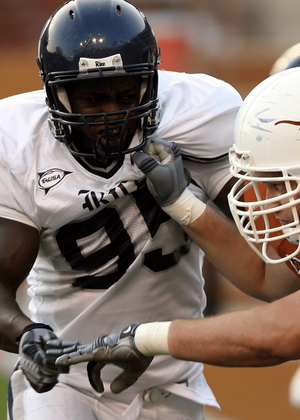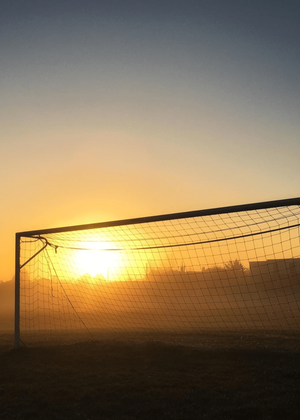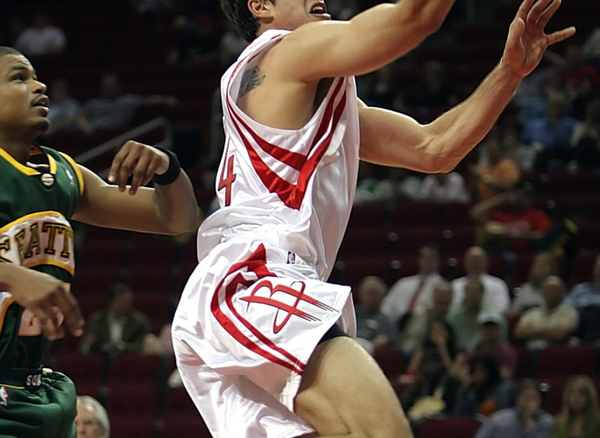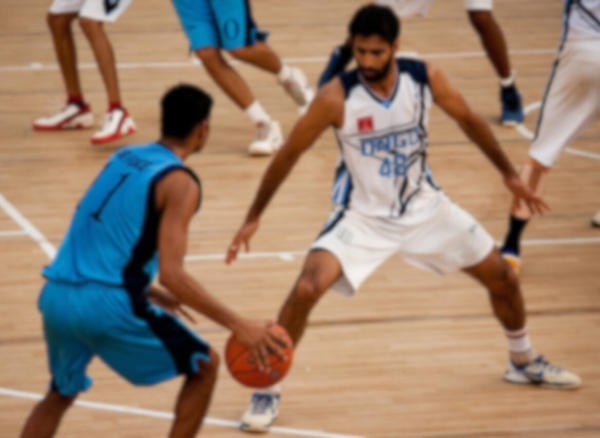Picture this: five basketball players moving in harmony, like a well-oiled machine, each part perfectly in sync with the others. This is the essence of the 1-2-2 zone defense, a strategy that can make the offensive team feel like they're trying to score against a brick wall with arms. The 1-2-2 zone is a defensive alignment where players are responsible for guarding an area of the court rather than a specific opponent. It's like throwing a net over the half court, and watching the shooting team get tangled in it.
The Point Guard's Nightmare
At the tip-top of the 1-2-2 zone sits the point guard, or as I like to call them, the "court commander." This player's job is to put pressure on the ball handler, disrupt the dribble penetration, and make sure the ball doesn't get cozy in the high post area. They're like the annoying older sibling who won't let you get to the cookie jar—constantly in the way and ruining all the fun.
Wing Defenders
Just below our court commander are the wing defender guards, positioned on either side of the free throw line extended. These players have the agility of cats and the reach of orangutans. They're tasked with guarding the strong side wing and the opposite wing, ready to pounce on any wing skip pass that dares to cross their path. They also have to keep an eye on the three point line, because let's face it, nobody likes a surprise three-pointer raining on their parade.
The Low Post Defender
Rounding out our defensive lineup are the two post defenders, who guard the low post area like it's the last slice of pizza at a party. These players must be in good position to challenge any pass inside, ready to double team the high post player or sprint to the corner to disrupt a corner skip pass. They're the gatekeepers, the last line of defense, and they take their job very seriously.
The Art of Positioning
Zone defenders are like chess pieces, each with their own role and area of influence. They must maintain a foot inside the paint to be in a position to help but also be ready to sprint out to the perimeter to challenge open shots. It's a delicate balance, like trying to pat your head and rub your belly at the same time.
The Sneaky Protector
On the weak side wing, the defender must be as sneaky as a ninja, always ready to slide into the lane for a quick reversal pass or to help out with a corner trap. They're the unsung heroes, often overlooked but always there when you need them, like that one friend who always has gum.
High Post Defender
The high post defender is like the middle manager of the defense, overseeing the high post area and coordinating the efforts of the perimeter defenders and the low post player. They have to be vocal, pointing out screens and directing extra defenders to the ball side wing or the opposite corner.
The Zone's Trap
When the ball handler thinks they've found a gap, the zone defense springs its trap. With quick feet and quicker minds, the defenders close in, forcing a lob pass or a hasty retreat. It's like watching someone walk into a spider web—suddenly, they're flailing, and the defense is ready to pounce.
The Defense's Kryptonite?
The wing skip pass might seem like the perfect weapon against the 1-2-2 zone, but our wing players are ready. With a leap and a swat, they can turn what looks like an easy pass into a fast break going the other way. It's the defensive equivalent of a magic trick—now you see an open player, now you don't.
The High Post Area
The high post area is where the battle is often won or lost. If the offensive team can get the ball inside to a high post player, they can wreak havoc. But if the zone defenders can keep the ball out, they'll have the offensive team throwing up prayers from the perimeter.
The Corner Player
The corner player might seem like they're just hanging out, waiting for a corner three, but they're actually in a strategic position. They have to be ready for the inside pass, the skip pass, or to step in and take a charge. They're like the Swiss Army knife of the defense—versatile and always useful.
Strong Guards and the 1-2-2 Zone
Strong guards are essential in the 1-2-2 zone, as they need to be able to pressure the ball, make quick passes, and keep the offensive team guessing. They're like the quarterbacks of the defense, calling the plays and making sure everyone is in the right spot.
The Low Post Area
In the low post area, the defenders must maintain a front position, denying the pass inside and forcing the offensive team to settle for less desirable shots. It's like telling someone all the ice cream is gone and watching them sadly settle for fruit salad.
The Strong Side Wing
The strong side wing is where the defense applies pressure, forcing the offensive team to make difficult passes and preventing them from getting into a rhythm. It's like being the annoying person at a party who keeps changing the music just as everyone starts to dance.
The Extra Defenders
The 1-2-2 zone defense always seems to have extra defenders, popping up where the offensive team least expects them. It's like playing whack-a-mole, but the moles are wearing basketball jerseys and they're really good at blocking shots.
Inside Pass
When an inside pass is made, it's red alert time for the zone defense. Everyone converges, ready to contest the shot or force a turnover. It's like the moment in a horror movie when the protagonist goes into the basement—everyone knows something's about to go down.
The Zone's Achilles' Heel
The fast break can be the Achilles' heel of the 1-2-2 zone, as it relies on quick transitions and strong guards to get back into their normal positions. It's like trying to get back into your car while it's rolling down a hill—doable, but definitely a bit frantic.
Passes Inside
Passes inside are the ultimate test for the 1-2-2 zone defense. Can the defenders react quickly enough to prevent the shot? It's like a pop quiz where the questions are flying at you and you have to answer with your feet.
The Half Court
The half court is where the 1-2-2 zone truly shines, controlling the space and dictating the pace of the game. It's like being the DJ at a club—you decide what's playing, and everyone else just has to dance to your tune.
The Reverse Pass
The reverse pass is the bread and butter of the 1-2-2 zone, allowing defenders to shift and adjust as the ball moves. It's like a dance routine where everyone knows their steps and moves in perfect harmony.
Skip Passes
Skip passes are a test of patience for the zone defense. The defenders must wait for the right moment to strike, like a cat watching a laser pointer. When they do pounce, it's with precision and purpose.
The Wing Players
The wing players in the 1-2-2 zone may not get all the glory, but they're the unsung heroes, covering ground and making life difficult for the offensive team. They're like the stage crew in a theater production—out of the spotlight but essential to the show.
The Low Post Player
The low post player is the anchor of the 1-2-2 zone, holding down the fort and making sure no one gets an easy bucket. They're like the friend who holds your hair back while you... well, you get the idea.
The Foot Inside
Keeping a foot inside the paint is the golden rule of the 1-2-2 zone. It ensures that defenders are always in a position to help, like a good neighbor who's always there when you need to borrow a cup of sugar.
The Inside Pass: The Moment of Truth
The inside pass is the moment of truth for the 1-2-2 zone. Will the defenders collapse and steal the ball, or will the offensive team find a chink in the armor? It's like the climax of a movie, where the hero faces the villain and everything hangs in the balance.
The 1-2-2 Zone Defense FAQs
What is the primary goal of the 1-2-2 zone defense?
The primary goal of the 1-2-2 zone defense is to disrupt the offensive team's flow, protect the paint, and force the shooting team to take difficult, contested shots from less optimal positions on the court.
How do defenders in a 1-2-2 zone defense handle skip passes?
Defenders in a 1-2-2 zone must quickly adjust their positions and close out on shooters when a skip pass is made. Wing defenders, in particular, need to be agile and ready to contest shots or cut off passing lanes.
Can the 1-2-2 zone defense be effective against teams with strong outside shooters?
Yes, the 1-2-2 zone can still be effective against teams with strong outside shooters by having quick and active perimeter defenders who can close out on shooters and challenge shots without leaving the paint unprotected. Adjustments and communication among defenders are key to success.
How to beat a 2-1-2 zone defense in basketball?
To beat a 2-1-2 zone defense in basketball, focus on moving the ball quickly and attacking the gaps. Look for passing lanes to penetrate and drive to the basket or kick out for open shots. Use movement and spacing to create opportunities for easy baskets.
Summary
The 1-2-2 zone defense is a strategic, area-focused approach to basketball that can stifle even the most potent offenses. By understanding the roles and responsibilities of each player, teams can create a dynamic and formidable defense that protects the paint, challenges perimeter shots, and forces turnovers. With practice and coordination, the 1-2-2 zone can be an effective weapon in any team's defensive arsenal.









